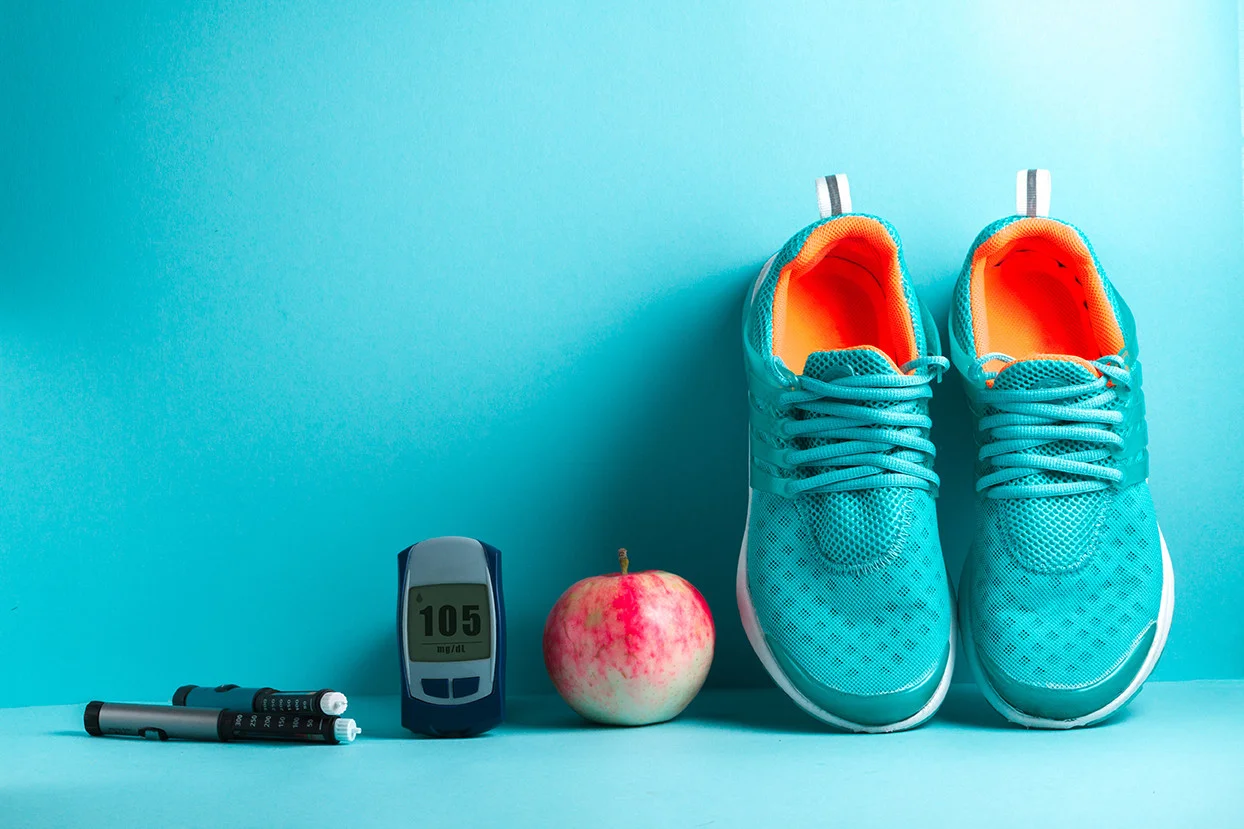Care & Treatment for Diabetes – Management of your Diabetes
Even though there are different types of diabetes, the primary focus of any diabetes treatment is to bring the blood sugar level close to the normal range using a combination of interventions addressing:
- Lifestyle – diet and exercise
- Medication
- Self-monitoring of glucose
Overall, achieving and maintaining a normal sugar level will help a diabetic not only prevent short term undesirable symptoms of diabetes but also reduce the risk for chronic complications of the eye, kidney, nerve and foot.
Type 1 Diabetes Treatment
As the type 1 diabetic condition occurs due to stopped insulin production, externally supplementing required amounts of insulin is the key treatment strategy.
Insulin is a protein that gets degraded due to the enzymes in our stomach if given by mouth, therefore, injection needs to be injected subcutaneously. An image of specific locations of the body where insulin can be injected is given side:
There are different kinds of insulin depending on their speed of action such as rapid acting, moderate-acting, and slow-acting insulin or their type of delivery device such syringes, pens, insulin pumps etc. Diabetes Specialists will suggest the appropriate type and dose of insulin to inject that is determined by multiple factors.
The other important treatment factors for type 1 diabetes are:
- Ensuring regular monitoring of glucose levels throughout the day, at least four or more times, as suggested by the doctor
- Having a balanced diet spreading the carbohydrate intake throughout the day
- Regular physical activity with an eye on how the blood sugars respond to exercise, to avoid hypo or hyper glycaemia
- Getting examined for the complications of eye, kidney and, heart, nerve diseases and dental problems as suggested by your doctor
- Avoid smoking and drinking alcohol
Book an Appointment
Type 2 Diabetes Treatment
When a person is newly diagnosed with type 2 diabetes, a slow progressing disease, the treatment aims to address two issues-
- Bringing the blood sugar to normal and
- Promptly evaluating and managing the complications of the kidney, eye, nerve and heart, which may already be present in some people
Initial step for type 2 diabetes management is to modify the lifestyle changes
- Diet – keep it healthy and balanced
- Losing excess weight
- Regular physical activity
When the lifestyle measures are unable to control the blood sugar levels, diabetes medication may be advised by the doctor, including any of the following options:
- Lifestyle modification + anti-diabetic pill
- Lifestyle modification + more than one of same anti-diabetic pill
- Lifestyle modification + two or more types of anti-diabetic pills
- Lifestyle modification + anti-diabetic pills + insulin injection
Other chief components for type 2 diabetes treatment are:
- Checking the glucose and HbA1c levels every two to six months until the blood glucose level become stable on unchanging therapy, or at least twice a year
- Getting examined for abnormal blood pressure at every visit; eye, kidney, heart, nerve and foot disease at least once a year; and going through dental cleaning and check-ups at least twice a year
- Keeping cholesterol and blood pressure levels within normal range
- Avoid smoking as it increases risk for other complications
- Being regular and consistent with the medicines and lifestyle recommendations suggested for any other health problems
- Taking appropriate care of foot and skin, as advised by the healthcare team
Gestational Diabetes Treatment
Gestational diabetes in a majority of cases could be successfully managed by regular physical activity and following the nutritional recommendations as suggested by the doctor. Some women may require medication management for effective blood sugar control.

